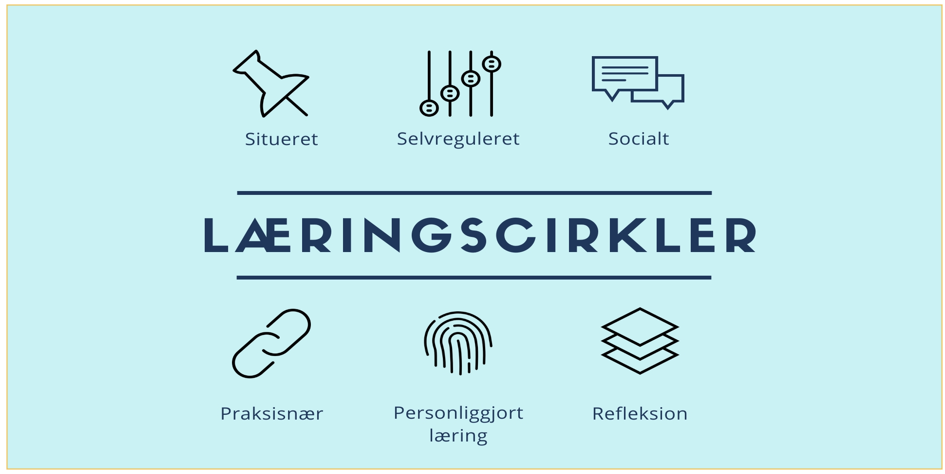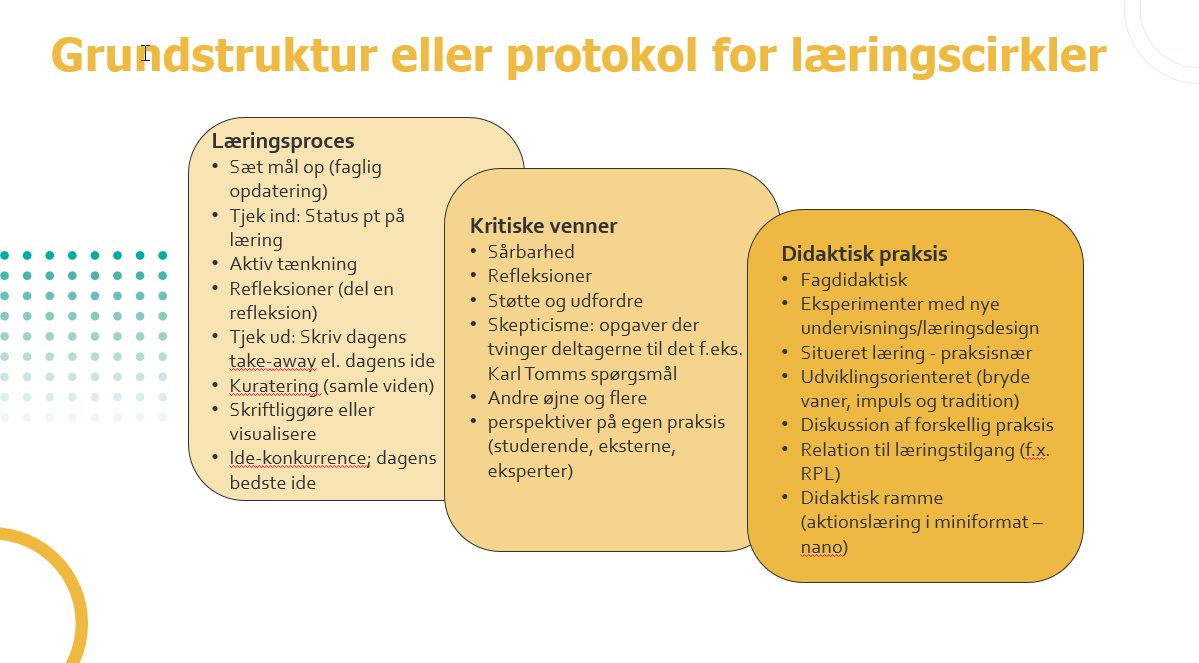
THEME: Learning Circles - The Pedagogical and Theoretical Background
In this month's themed article, you can read about the theoretical and pedagogical background of the Learning Circles. Furthermore, the article discusses how the Learning Circles can facilitate practice-oriented learning.
Project Digital Competences through Learning Circles is an 8 week competence development course. Throughout the course, teachers will be put in groups of 5, each group with a facilitator, and will work on developing their digital competences.
Throughout the 8 week learning circles, the teachers will study a digital resource collection, participate in 8 synchronous meetings (illustrated below), develop didactic designs and test out small and large changes to their teaching practice in order to develop their practice through cooperative pedagogical reflections in the learning circle.

Learning circles are not a new concept and can be compared to “Professional Learning Communities (PLC)”, which also put focus on teams sharing knowledge based on their needs with the purpose of reaching the goals, they have set themselves. The learning circle concept moves away from the notion of competence development in organizations through more generic teacher controlled courses and has instead been inspired by both Personal Learning Communities (PLC) and Personal Learning Networks (PLN).
The theoretical foundation of the learning circles
In the following, we will give a brief overview of 6 equally weighed theoretical frameworks, which in combination form the foundation of UCN’s further development of the concept.

UCN compares the process in the learning circle to e.g. Kolb’s learning cycle, where learning is viewed as a process containing 4 stages – from concrete experience, through reflective observation and abstract conceptualization and to active experimentation – and from this point back to a new concrete experience. The learning circles furthermore build on the social constructivist theory, where the participants are active, social and cooperative in their learning process.
UCN highlights Jean Lave and Etienne Wenger’s theory on Situated learning and their focus on the social dimension as important to the learning outcome of the learning circles. According to Lave and Wenger, learning takes place in a certain situation, which influences the nature of the learning process and what is learned. The practice oriented aspect of the learning circles, i.e. using the teachers’ needs and challenges in their own teaching practice as a starting point, makes the competence development relevant, meaningful and authentic for the teachers. It also helps create a transferal of learning from the learning circles to the teachers’ own practices.
A personalized learning format where the teachers are given the opportunity of setting personal goals for their competence development and self-regulate their learning, is viewed as a significant pedagogical driving force, and is thus supported in the learning circles – among other things through reflection on the teachers’ own learning process. The “reflective practitioner” is based on Donald Schön’s theory and terms of knowing-in-action and reflection-in-action, where the teachers are given the opportunity of putting their knowledge in play along with the other participants. Through reflection-in-action, they are able to challenge the presumed structure in their knowledge-in-action. This reflection thus gives them the opportunity of experimenting right then and there.
Structure, contents and framework of the 8 learning circle meetings
Each meeting in the learning circles lasts 1 hour. Guides and agendas have been developed for use when conducting the learning circle meetings (in Danish) with the purpose of creating a framework for and facilitating the teachers’ learning process teachers in the learning circles. An overview of how the activities are connected to the learning process, the use of critical friends and the didactic practice, can be found below – in Danish.
